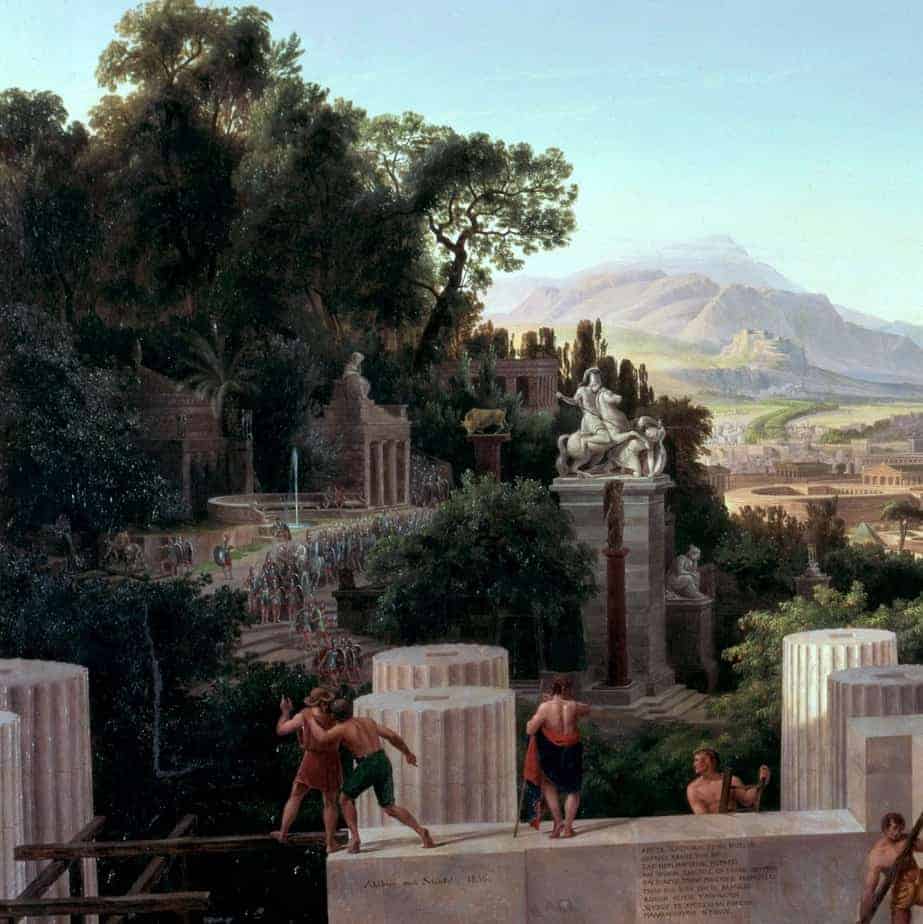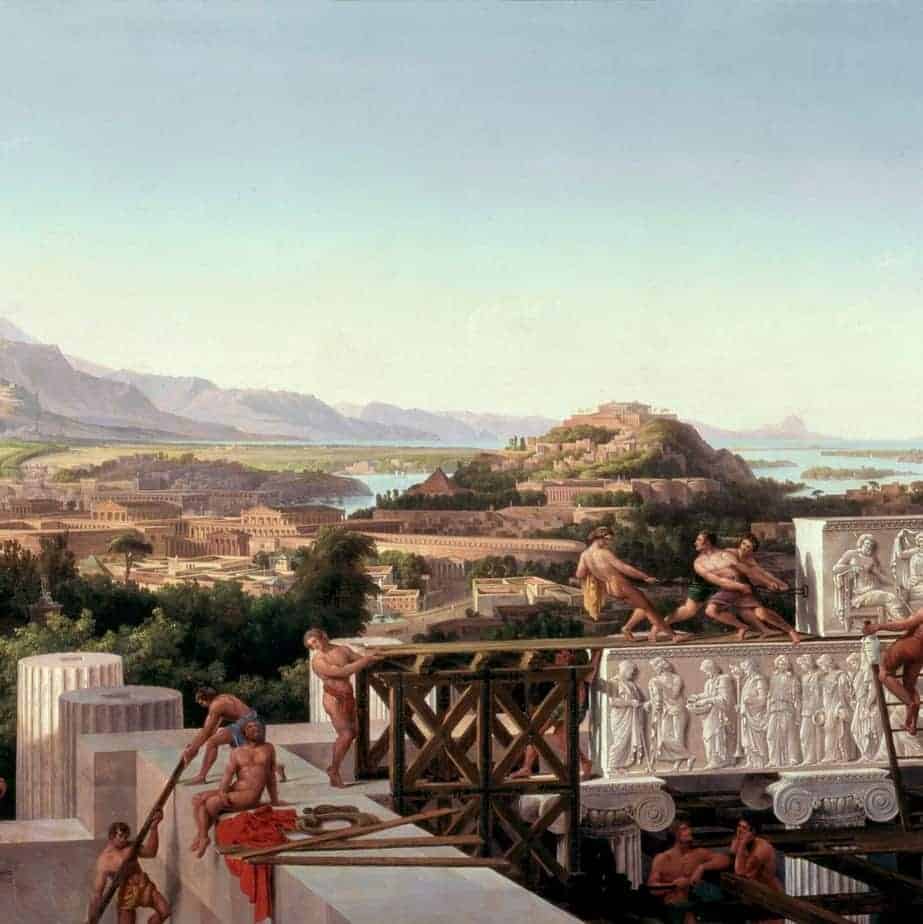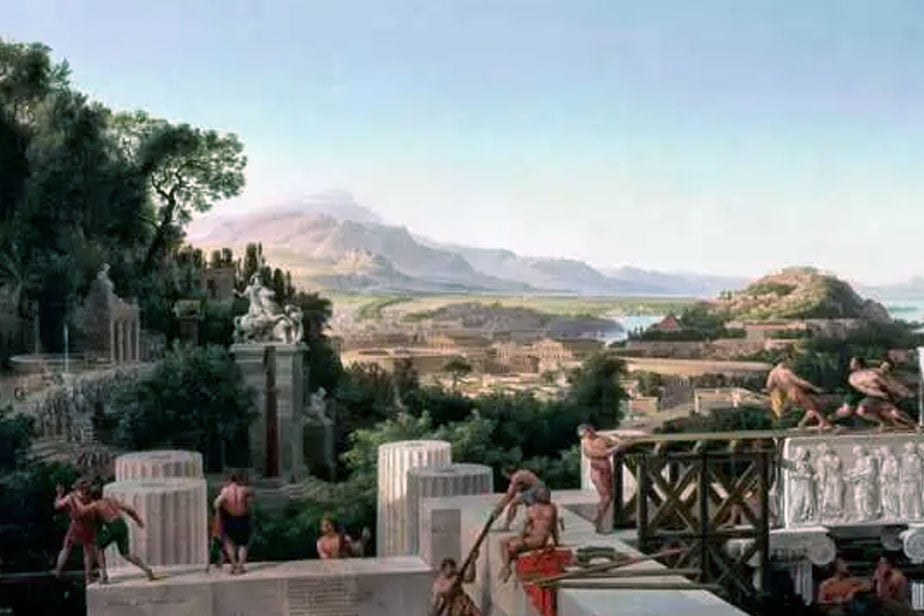Blick in Griechenlands Blute (View of the Flower of Greece) is one of the most beautiful and acclaimed paintings by German artist Karl Friedrich Schinkel.
The harmony between human activity and nature depicted in the painting is unique.
The Greek landscape works so well with the natural flora as they are masterfully infused together by this talented painter.
For Schinkel, the construction of a temple was an achievement, and a symbol of a harmonious community, as his vision of new Athens, post-Turkish domination was characterized by his works.
The View Of The Flower Of Greece – The Story Behind..
The city of Berlin purchased the picture as a wedding gift for princess Luise, the youngest daughter of King Frederich Wilhelm III, for her marriage to Prince Frederik of the Netherlands in May 1825.
Karl Schinkel manifested an idea of a landscape painting on the canvas, in which nature and human activity are in complete accord. The artist depicted a major building project’s socially cohesive effect against the backdrop of an idealized urban Greek landscape; naked Greek heroes erect an iconic temple with a double entryway.
How long has the construction been going on?
A harmonious mix of skill, nature, and creativity
One of the central elements of the painting is the moving of a huge block of marble for the friezes. It was obviously produced elsewhere and now has to find its place to complete the puzzle that seems to be this temple. All of the elements are different, but they blend together so well that they seem like one.

You can’t tell that the friezes are created by several blocks, and only by witnessing the placement of the last one do you realize this is the case.
Seeing all the effort on the faces of the men moving it, you realize that it takes the collective effort of all of them to get it done. What are they thinking right now? What would you think if you were in their situation? Would you have done things differently? These are but some of the questions this scene evokes.
For the artist the construction of a temple was the crowning achievement and a symbol of a harmonious community, of a better world order.
The level of detail in The View Of The Flower Of Greece is impressive.
The lighting effects are astounding. But the thing that leaves the strongest impression is how well the whole scenery blends.
It’s like the Greek city sprung from nature itself and wasn’t man-made.
The landscape creates this very convincing impression. The flow between the hills, the buildings, and the flora is perfect. It’s like it was all a part of a great plan, and the harmony it introduces can be felt in one’s heart.
It doesn’t seem like human activity is harming nature in any way.
On the contrary – it like it’s naturally complementing it. Achieving this level of concord must have been difficult, but Schinkel (and later Ahlborn) have done it masterfully.
The Greek inspiration on the temple wall to the left quotes Aristotle’s song of praise for the virtue of battle and heroic death.

Some of the men working on the construction of the temple are looking toward the warriors returning home – an allusion to the wars of the liberation of Prussia against Napoleon.
The liberation of the Greeks from Ottoman domination also springs to mind, as their struggle was coming to a victorious end when the painting was produced.
The war is over, and soldiers are coming home. Even their presence in the painting speaks of peace, not war.
Several different sculptures are depicted in the painting, one of which can be closely tied to the mythology.
The bull sculpture in the background, for example, can be related to the Cretan bull.
The colors are very vibrant and realistic. They manage to perfectly entice us and transport us into the midst of the scene that has been depicted.
We can feel that the world we’re seeing is living and breathing. It’s not just a simple painting but a detailed explanation of the importance of harmony in our world.
Sadly, the original painting went missing and was later recreated by Wilhelm Ahlborn in 1836.
The recreation has kept a large part of the original’s magic, which is why we can still admire it to this day and gasp at its greatness, but the original will always be the better piece simply because it was the first.
One wouldn’t exaggerate if saying that Schinkel outdid himself. This is truly one of Schinkel’s best works.
When it’s all said and done, you don’t need a description of the painting – The View Of The Flower Of Greece.
You don’t need to think about what it means, what is depicted, or even what the artist meant.
You need to look at it and marvel at the landscape, breathtaking in its beauty and incomparable to anything else.
Probably this is why it can only be classified as one of the top masterpieces as no other word does it justice.
Salute Schinkel!


